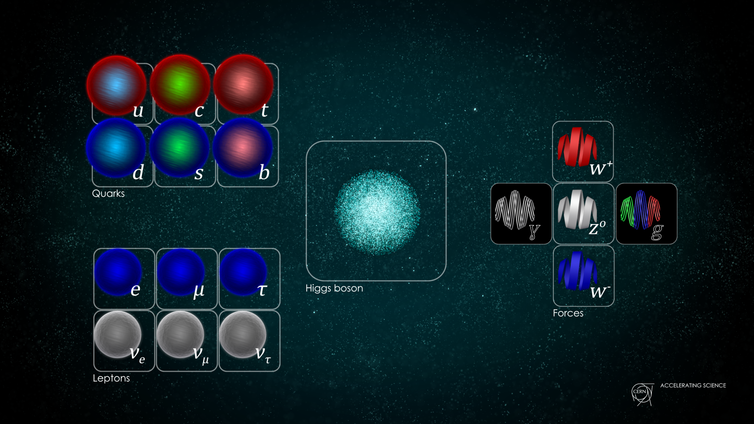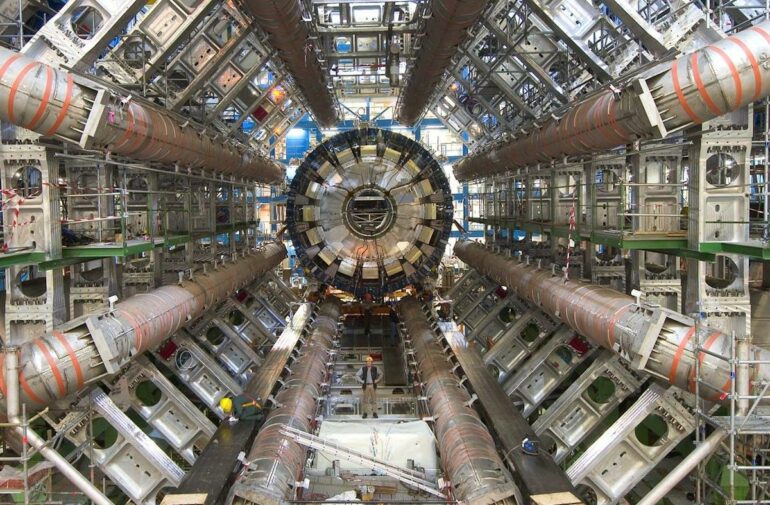If you ask a physicist like me to explain how the world works, my lazy answer might be: “It follows the Standard Model.”
The Standard Model explains the fundamental physics of how the universe works. It has endured over 50 trips around the Sun despite experimental physicists constantly probing for cracks in the model’s foundations.
With few exceptions, it has stood up to this scrutiny, passing experimental test after experimental test with flying colors. But this wildly successful model has conceptual gaps that suggest there is a bit more to be learned about how the universe works.
I am a neutrino physicist. Neutrinos represent three of the 17 fundamental particles in the Standard Model. They zip through every person on Earth at all times of day. I study the properties of interactions between neutrinos and normal matter particles.
In 2021, physicists around the world ran a number of experiments that probed the Standard Model. Teams measured basic parameters of the model more precisely than ever before. Others investigated the fringes of knowledge where the best experimental measurements don’t quite match the predictions made by the Standard Model. And finally, groups built more powerful technologies designed to push the model to its limits and potentially discover new particles and fields. If these efforts pan out, they could lead to a more complete theory of the universe in the future.

The Standard Model of physics allows scientists to make incredibly accurate predictions about how the world works, but it doesn’t explain everything.
CERN, CC BY-NC
Filling holes in Standard Model
In 1897, J.J. Thomson discovered the first fundamental particle, the electron, using nothing more than glass vacuum tubes and wires. More than 100 years later, physicists are still discovering new pieces of the Standard Model.
The Standard Model is a predictive framework that does two things. First, it explains what the basic particles of matter are. These are things like electrons and the quarks that make up protons and neutrons. Second, it predicts how these matter particles interact with each other using “messenger particles.” These are called bosons – they include photons and the famous Higgs boson – and they communicate the basic forces of nature. The Higgs boson wasn’t discovered until 2012 after decades of work at CERN, the huge particle collider in Europe.
The Standard Model is incredibly good at predicting many aspects of how the world works, but it does have some holes.
Notably, it does not include any description of gravity. While Einstein’s theory of General Relativity describes how gravity works, physicists have not yet discovered a particle that conveys the force of gravity. A proper “Theory of Everything” would do everything the Standard Model can, but also include the messenger particles that communicate how gravity interacts with other particles.
Another thing the…



